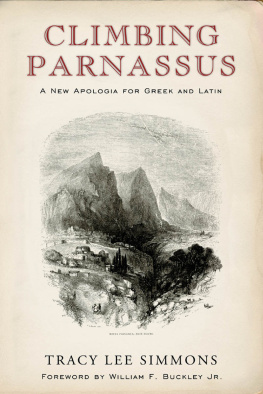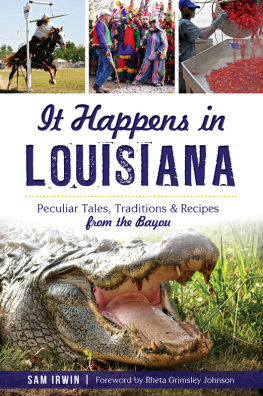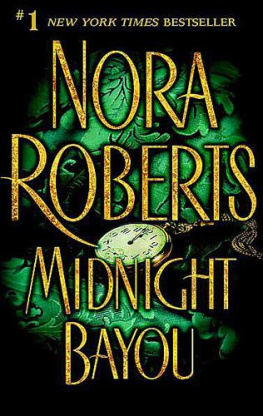Bayou
SALADO
THE STORY OF SOUTH PARK
REVISED EDITION
VIRGINIA McCONNELL SIMMONS
UNIVERSITY PRESS OF COLORADO
2002 by Virginia McConnell Simmons
Published by the University Press of Colorado
5589 Arapahoe Avenue, Suite 206C
Boulder, Colorado 80303
All rights reserved
Printed in the United States of America
The University Press of Colorado is a cooperative publishing enterprise supported, in part, by Adams State College, Colorado State University, Fort Lewis College, Mesa State College, Metropolitan State College of Denver, University of Colorado, University of Northern Colorado, University of Southern Colorado, and Western State College of Colorado.
The paper used in this publication meets the minimum requirements of the American National Standard for Information SciencesPermanence of Paper for Printed Library Materials. ANSI Z39.48-1992
Library of Congress Cataloging-in-Publication Data
Simmons, Virginia McConnell, 1928
Bayou Salado : the story of South Park / by Virginia McConnell Simmons.
p. cm.
Includes bibliographical references and index.
ISBN 0-87081-670-5 (alk. paper)
1. South Park (Colo.)-History. I. Title.
F782.S6 S55 2002
978.859-dc21
200218119
Cover design by Daniel Pratt
11 10 09 08 07 06 05 04 03 02 10 9 8 7 6 5 4 3 2 1
For Tom and Susie,
and for Abby Kernochan who knew the promised land.
ALSO BY VIRGINIA McCONNELL SIMMONS
Ute Pass: Route of the Blue Sky People
The Springs of Manitou (with Bettie Marie Daniels)
The San Luis Valley:
Land of the Six Armed Cross, Second Edition
Valley of the Cranes
The Upper Arkansas
The Ute Indians of Utah, Colorado, and New Mexico
FOREWORD
The reissue of Bayou Salado: The Story of South Park thirty-six years after its first appearance confirms a suspicion that some books, like offspring, take on lives of their own and strike off in directions not anticipated at the time of their birth. Originally published by Sage Books, Fred Pruett Books gave this book the chance to continue its stubborn career long after it might have retired and allowed for the addition of a new map, drafted by my husband, geologist George C. Simmons.
The continued interest in this slice of Colorados story is gratifying to me, because I have an abiding faith in the value of regional history. Whether or not our lives have been entwined with a place like South Park, we become enriched by remembering the people who lived and worked there in previous times. Those individuals were real people with hands and minds and purposes like our own, although their place and age posed different problems and offered different opportunities. By reading about them we expand our own lives, our own range of imagination, and our own potential. We also understand better the meaning of broader histories and may even be able to say sometimes, But there was more to the story than that.
To look at a breathtakingly beautiful landscape like South Park and to visualize events that occurred gives me pleasure. Apparently, it pleases other people, too, for more and more people are discovering South Park. Although the rapid growth of population along Colorados Front Range accounts in part for this increase in tourism, the rising cost of transportation will continue to make South Park a desirable place to escape from the pressures of life in nearby cities.
It is hoped that this new printing of Bayou Salado will help visitors and residents enjoy and understand the unique place that is called South Park. It is hoped, too, that in appreciating its beauty and history, people will be encouraged to preserve those qualities.
One needs no special sensibilities to feel a sudden choke of wonder when he looks for the first time down across the immense upland valley of South Parkbeyond the clumps of straw-dry grass and glittering chunks of mica and granite at his feet, beyond the quivering aspens which patch the hills on either side with gold.
Beyond them, the hazy, grey-beige valley seems suspended on the surface of some weightless mirage. Here and there islands, blackened with ragged shawls of pine and fir, jut up from the shimmering monotone of earth. Fifty miles or so away sharp crystalline peaks rim the edge, cupping the land lest it spill out and drift away.
And above and above, deep, palpable, the dome-sky spreads across the land. Only the blue, the incredible blue of the sky, seems tangible. A canopy, it is the one element which seems to hold this strange, waiting dream against the earth.
Table of Illustrations
CHAPTER ONE
The Virgin Land
If ever there was a land of subtle, magnetic charms, South Park is that place. Rich in beauty, sparkling rivers, game, mineral wealth, range land, and legend, the valley and its ring of mountains have held the promise of fulfillment to all who have come there through the centuries. This magical place has seldom failed them. Instead, the caprice and frailty of the men themselves have led to the occasional disappointments that the park has witnessed. That South Parks resources have outlasted mans effort to exploit them is part of its mystical allure.
Today South Park attracts another kind of searcher, too. Here in the heart of the Rockies, accessible to travel, yet remote enough to be spared modern mans defacement of its virgin beauty, the park beckons him to make peace with his twentieth-century restlessness and neuroses. The gentleness and the savagery alike of this unspoiled land speak to a fundamental need of our new searcher, our civilized man who cannot find himself, lost in a journey among his own endeavors.
There is a certain perverse comfort in knowing that this magnificent land, like man, is not eternal. In that sense the park becomes a challenge to him to accept its beauty and dimension and resources on terms that he can recognize in human life and perhaps can weave into his own creations.
And so to South Park ...
From Wilkerson Pass one sees a large portion of the park spread out in its startling immensity. Coming to this pass the traveler has wound up through the wooded hills of the Front Range, past the great, bald mass of Pikes Peak which now looms behind to the east.
Far across South Park on the west side lie the white alkaline marshes and salt springs to which the Indians once came while following game. The Spaniards called the park Valle Salado, or Salt Valley, when they passed through. French explorers and trappers, also intrigued by the saline ground and springs, later used the Creole name Bayou Salade, Salt Marshes. But the American mountain men gave the valley their own hybrid title by calling it the Bayou Salado, a name which became the synonym of romance, adventure, and fortune to the American trapper.
The name South Park was first used in the 1840s when a chain of large mountain valleysNorth Park, Middle Park, South Park, and to a lesser extent the San Luis Valleywere becoming a popular circuit for American hunters. Since these valleys were the feeding grounds of vast herds of game, the word park was used to describe the regions, the French word for a game preserve being parc.
This chain of parks runs down through the center of Colorado like spaces between the vertebrae of the mountains; and South Park is located in the very center of the state. It is a large plateau, fifty miles long and thirty-five miles wide, bordered on all sides by mountains. Although the flat land of the park occupies 900 square miles, there are 1,400 square miles within the circumference of the surrounding peaks. The floor of the basin varies from 8,500 feet to 10,000 feet above sea level.













